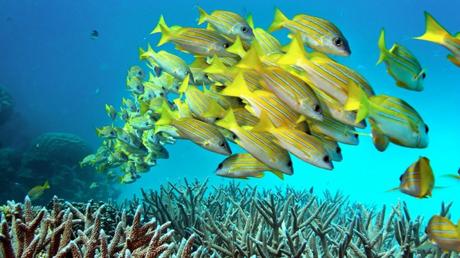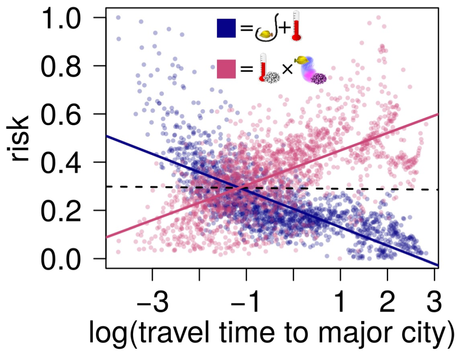The intensity of threats to biodiversity from human endeavour becomes weaker as the distance to them increases.

As you move away from the big city to enjoy the countryside, you’ll notice the obvious increase in biodiversity. Even the data strongly support this otherwise subjective perception — there is a positive correlation between the degree we destroy habitat, harvest species, and pollute the environment, and the distance from big cities.
Remote locations are therefore usually considered safe havens and potential reservoirs for biodiversity. But our new study published recently in Nature Communications shows how this obvious pattern depicts only half of the story, and that global conservation management and actions might benefit from learning more about the missing part.
Communities are not just lists of individual species. Instead, they consist of complex networks of ecological interactions linking interdependent species. The structure of such networks is a fundamental determinant of biodiversity emergence and maintenance. However, it also plays an essential role in the processes of biodiversity loss. The decline or disappearance of some species might have detrimental —often fatal — effects on their associates. For example, a parasite cannot survive without its hosts, as much as a predator will starve without prey, or a plant will not reproduce without pollinators.
Events where a species disappears following the loss of other species on which it depends are known as co-extinctions, and they are now recognised as a primary driver of the ongoing global biodiversity crisis. The potential risk stemming from ecological dependencies is a major concern for all ecological systems.
Earlier this year, we showed that almost half of tropical fish diversity is threatened by mass events of coral mortalities due to a widespread dependency of fish on corals. In our latest paper, we have gone a step farther to identify a general macro-ecological mechanism that calls for a reconsideration of global conservation strategies.

We combined a massive dataset of fish distribution and ecological traits for more than 9000 fish species. Using artificial-intelligence techniques, we generated thousands of networks mapping the interactions between corals and fish, and those between fish prey and fish predators in all reef localities worldwide.
For each locality we quantified the degree of fish dependency on corals based on the direct and indirect paths connecting fish to corals across different trophic levels. The results support our previous projections, confirming that coral loss might detrimentally affect around 40% of fish species on average in each coral-reef area.
We then explored how the degree of ecological dependency changes with remoteness, quantified as travel time from the target location to the closest human settlement. We found that the dependency between fish and corals becomes stronger with distance from humans (Fig. 1b). That is, remote reefs are those where the impact of coral mortality events might affect the largest proportion of fish species.
Therefore, we asked whether the increased risk stemming from the potential cascading effects of coral mortality might counteract the benefits that remote fish communities experience thanks to the reduced impacts of human activities.

From these results we devised a novel risk-assessment framework — one that is applicable to any ecosystem — by combining local anthropogenic impacts (such as overfishing and pollution), global impacts (climate and environmental change), and the risk derived from ecological interactions.
For reef-fish communities, the latter consists of the combination of local risk of mass coral mortality (which depends on water surface temperature and is independent from remoteness) and the degree of fish-coral dependency. The framework revealed that taking into account ecological dependencies flattens the expected negative relationship between extinction risk for fish communities and remoteness (Fig. 2).
When this is translated into spatial planning for identifying hotspots of risk, for example, a novel picture of global-scale ecosystems’ vulnerability emerges. The hotspots of risk for fish communities from local anthropogenic impacts and global change are almost perfectly complementary with the hotspots of risk from fish-coral dependencies.

This produces a global map of risk for fish communities where no place is safe, regardless of distance from humans (Fig. 3). The validity and relevance of these findings might extend far beyond reef fish, depicting a world where remote localities, rather than safe havens for biodiversity might instead be areas of critical vulnerability.
Giovanni Strona

